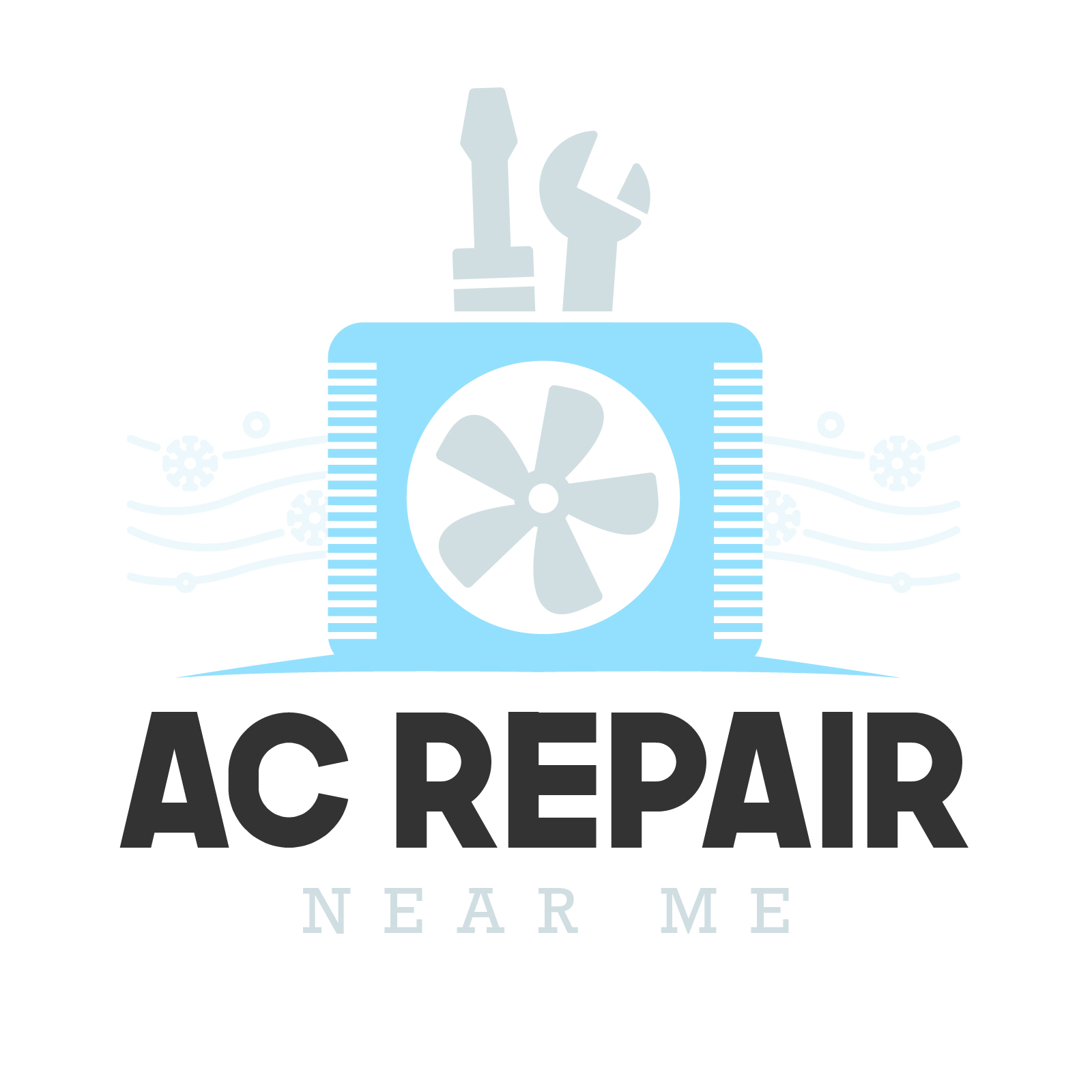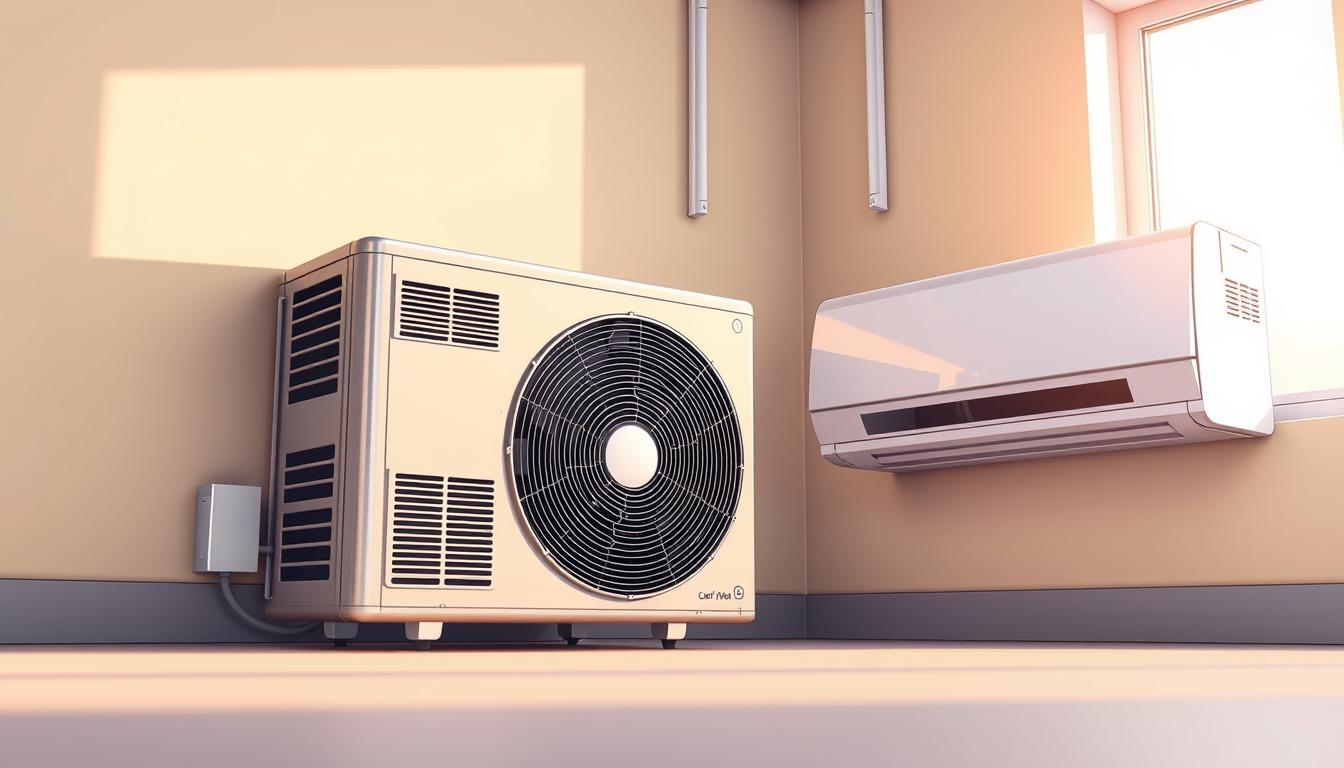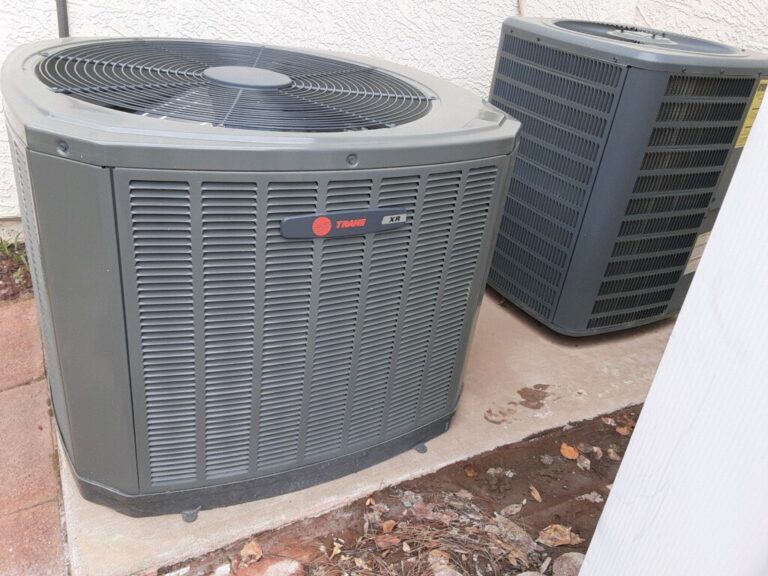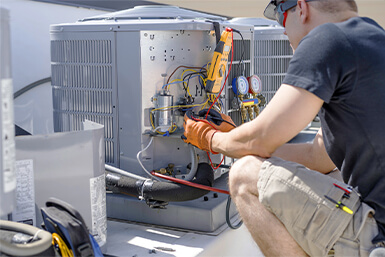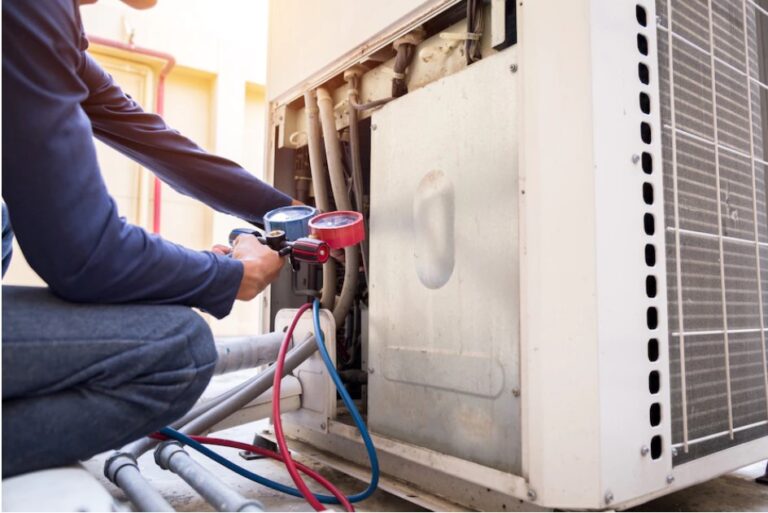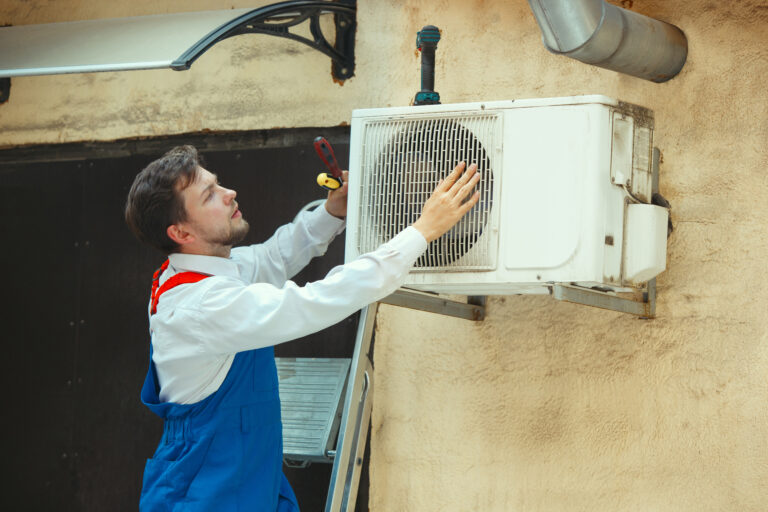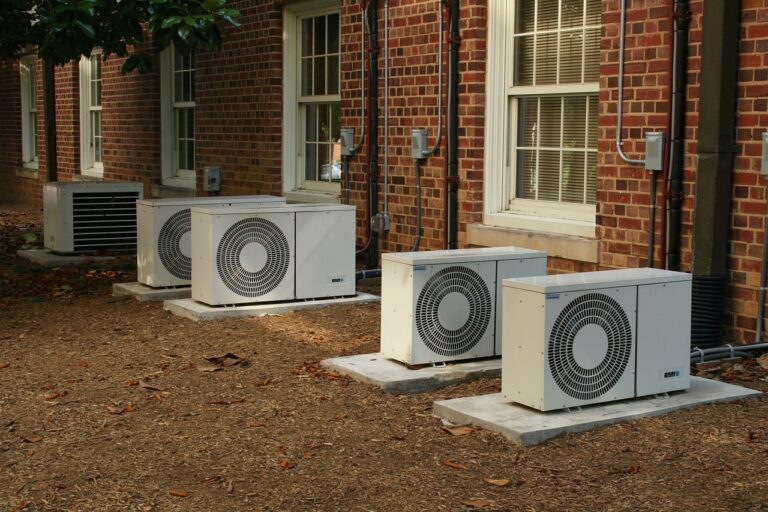What Is a Split System Air Conditioner and How Does It Work?
A split HVAC system is an air conditioning system that consists of both indoor and outdoor units connected by copper tubing. Traditionally, the outdoor unit houses the compressor and condenser, while the indoor unit contains an evaporator coil and an indoor air handling unit.
This setup allows the air conditioner to transfer heat from inside your home to the outdoors, rather than creating cold air. Understanding how split system air conditioners work can help you make informed decisions about your home’s cooling needs and potentially save on energy costs.
Key Takeaways
- Split system air conditioners are a popular cooling solution for modern homes.
- They work by transferring heat from inside your home to the outdoors.
- The indoor unit contains an evaporator coil and air handling unit.
- Understanding split system operation can help you save on energy costs.
- Split system air conditioners are a viable option for home cooling needs.
Understanding Split System Air Conditioners
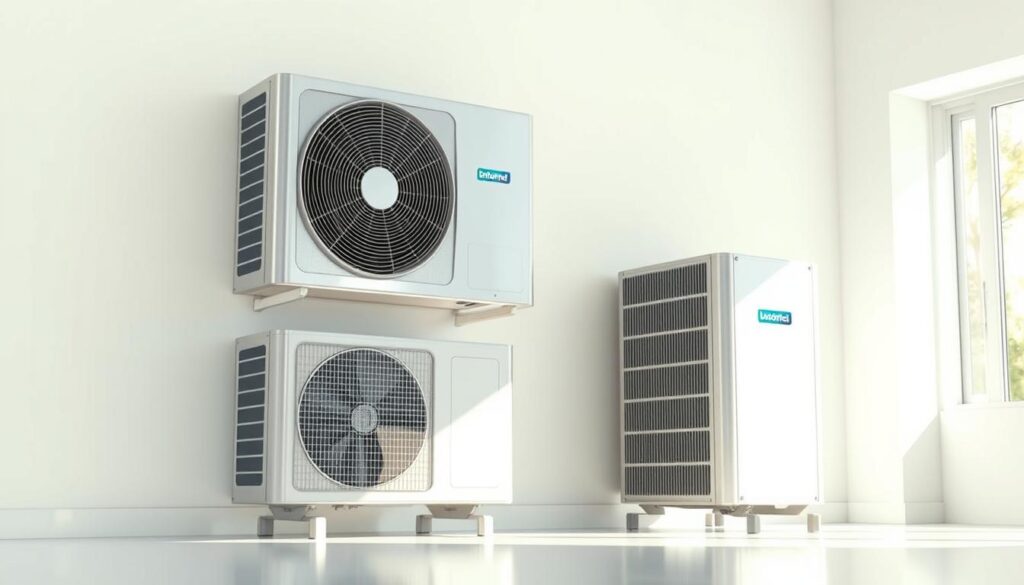
The concept of split system air conditioners may seem complex, but breaking it down reveals a straightforward and efficient cooling solution. A split system air conditioner is essentially a single cooling system divided into two separate units: an outdoor unit housing the condenser and compressor, and an indoor unit containing the evaporator, furnace, air handler, and filters.
Definition and Basic Components
A split system air conditioner is defined by its separation of components into indoor and outdoor units, connected by refrigerant lines. The outdoor unit contains the compressor and condenser coil, while the indoor unit houses the evaporator coil and air handler. This setup allows for flexible installation options and can be adapted to various home configurations.
How They Differ from Other AC Systems
Unlike packaged HVAC systems, where all components are contained within a single unit, split system air conditioners offer several advantages. They provide reduced noise levels since the noisier components are outdoors, and they can be more energy-efficient. Additionally, split systems can be installed with or without ductwork, making them versatile for different home setups.
Understanding these fundamental aspects of split system air conditioners helps clarify why they’ve become the standard for residential cooling in many modern homes. Their design offers significant benefits in terms of efficiency, flexibility, and comfort.
Split System AC Explained: The Working Mechanism
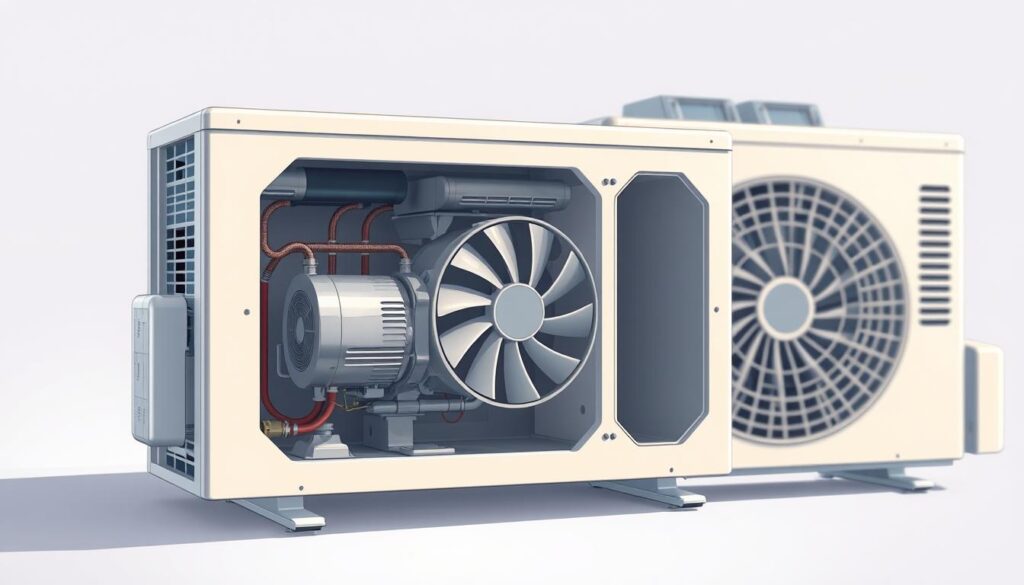
The split system air conditioner operates on a simple yet efficient principle that involves transferring heat rather than creating cold air. Essentially, it takes the heat from inside your home and dumps it outside, thus lowering the interior temperature.
The Cooling Cycle Process
The cooling cycle of a split system air conditioner involves four main stages: compression, condensation, expansion, and evaporation. During compression, the refrigerant is compressed, raising its temperature and pressure. In the condensation stage, the hot refrigerant gas is cooled, causing it to condense into a liquid. The expansion stage involves the refrigerant passing through an expansion valve, which reduces its pressure and allows it to expand. Finally, during evaporation, the cold, low-pressure refrigerant absorbs heat from your home’s air, cooling it down.
This cyclical process is crucial for effective temperature control. For more detailed information on maintaining your air conditioner, you can refer to important steps for successful air conditioner.
Role of Refrigerant in Heat Transfer
The refrigerant plays a critical role in the heat transfer process. It changes states from gas to liquid and back to gas as it absorbs and releases heat energy. The indoor unit’s evaporator coil absorbs heat from your home’s air, while the outdoor unit’s condenser releases that heat outside. This process is fundamental to how split system air conditioners maintain consistent indoor temperatures, even during extreme weather conditions.
Understanding this process also helps in appreciating how the thermostat controls the entire cooling cycle, signaling the system to start and stop based on your temperature preferences. Moreover, the same principle works in reverse for heat pump systems that can both cool and heat your home, offering a versatile solution for year-round comfort.
Main Components of a Split System Air Conditioner
The main components of a split system air conditioner are crucial for its efficient operation. A split system is made up of several key parts that work together to provide effective cooling and heating.
Outdoor Unit: Compressor and Condenser
The outdoor unit houses the compressor and condenser coil. The compressor pressurizes the refrigerant, allowing it to release heat outside through the condenser coil. This process is vital for the cooling cycle.
Indoor Unit: Evaporator and Air Handler
The indoor unit contains the evaporator coil and air handler. The evaporator coil absorbs heat from the indoor air, while the air handler circulates the cooled air throughout the home. For more detailed information on troubleshooting common issues with your air conditioner, you can refer to tips on how to repair your air conditioner by.
Connecting Elements: Refrigerant Lines and Wiring
The outdoor and indoor units are connected by refrigerant lines and electrical wiring. The refrigerant lines transport the refrigerant between the units, while the wiring powers the system. Proper installation and maintenance of these connecting elements are essential for the overall performance of the air conditioning system.
Understanding the function of each component helps homeowners identify potential issues and ensures optimal system performance. Proper sizing and matching of these components are crucial for energy efficiency and effective cooling and heating.
Types of Split System Air Conditioners
Understanding the different types of split system air conditioners is crucial for selecting the right one for your home. Split system air conditioners are not a one-size-fits-all solution; they come in various configurations to suit different home layouts, climate conditions, and comfort preferences.
Standard Split System ACs
Standard split system ACs are the most common configuration in American homes. They consist of an outdoor unit connected to an indoor unit via refrigerant lines. These systems are designed to work with ductwork, providing whole-home cooling. They are ideal for homes with existing ductwork, offering an efficient cooling solution.
Heat Pump Split Systems
Heat pump split systems offer both heating and cooling capabilities by reversing the refrigerant flow. This versatility makes them a year-round climate control solution. They are particularly beneficial in mild climates where extreme temperatures are rare.
Ductless Mini-Split Systems
Ductless mini-split systems eliminate the need for ductwork by using individual air handlers mounted in different rooms. This makes them ideal for older homes, additions, or zoned comfort control. They provide flexible temperature control across different zones of your home.
Multi-Split Systems
Multi-split systems allow multiple indoor units to connect to a single outdoor unit. This configuration is perfect for homes with multiple rooms or zones that require independent temperature control. It offers a discreet and efficient solution for complex cooling and heating needs.
| Type | Description | Ideal For |
|---|---|---|
| Standard Split System ACs | Connected to ductwork for whole-home cooling | Homes with existing ductwork |
| Heat Pump Split Systems | Provides both heating and cooling | Mild climates, year-round comfort |
| Ductless Mini-Split Systems | No ductwork required, zoned comfort | Older homes, additions, zoned control |
| Multi-Split Systems | Multiple indoor units to one outdoor unit | Homes with multiple zones or rooms |
Each type of split system air conditioner has its unique features and applications. By understanding these differences, homeowners can make an informed decision that best suits their specific needs.
Benefits of Installing a Split System Air Conditioner
Homeowners looking for a reliable, efficient, and customizable air conditioning solution often turn to split system air conditioners. These systems offer a range of benefits that make them an attractive choice for many.
Energy Efficiency and Cost Savings
One of the primary advantages of split system air conditioners is their energy efficiency. Modern split systems are designed to minimize energy waste, with efficiency ratings ranging from the minimum allowed by the Department of Energy (DOE) to high-efficiency systems with ratings up to 24 SEER2. By installing a high-efficiency ducted air conditioner ormini split AC system, homeowners can save money by reducing energy costs, especially when the system offers both heat and cool functions for year-round use. Energy Star® certified split systems are considered much more energy efficient, providing substantial long-term financial benefits despite higher upfront costs.
Customization and Zoning Capabilities
Split systems offer superior customization through zoning capabilities, allowing homeowners to cool only the spaces they’re using and set different temperatures for different areas of their home. This not only enhances comfort but also reduces energy consumption in spaces that don’t need constant conditioning.
Quiet Operation and Improved Air Quality
Split system air conditioners typically operate more quietly than other cooling options since the noisiest components are housed in the outdoor unit. Additionally, they can improve indoor air quality through better filtration, humidity control, and reduced opportunities for dust and allergens to enter the system.
- Enhanced energy efficiency and cost savings
- Customizable zoning for optimal comfort
- Quieter operation compared to other systems
- Improved indoor air quality
By considering these benefits, homeowners can make an informed decision about whether a split system air conditioner is the right choice for their home, potentially increasing their home’s value and comfort while qualifying for energy efficiency rebates or tax incentives.
Potential Drawbacks to Consider
While split system air conditioners offer numerous benefits, there are several potential drawbacks to consider before making a decision. Understanding these limitations will help homeowners make an informed choice.
Installation Costs and Requirements
One of the primary drawbacks of split system air conditioners is their higher upfront installation cost. Since the system consists of two separate units, the installation process can be more complex and expensive compared to packaged units or window ACs. The cost can further increase if the indoor and outdoor units need to be installed far apart.
Space Considerations and Aesthetic Impact
Split system air conditioners require space for both the indoor and outdoor units. Homeowners with limited outdoor space may find it challenging to accommodate the outdoor unit. Additionally, the visible indoor air handlers and outdoor unit can have an aesthetic impact on the home’s appearance.
Maintenance Needs
Regular maintenance is crucial to ensure the efficiency and longevity of split system air conditioners. This includes tasks such as filter changes, coil cleaning, and professional service checks. As “a well-maintained system is key to optimal performance”, neglecting these tasks can lead to reduced performance and increased energy bills.
By considering these potential drawbacks, homeowners can weigh the advantages and disadvantages of split system air conditioners and make an informed decision that suits their needs.
Choosing the Right Split System for Your Home
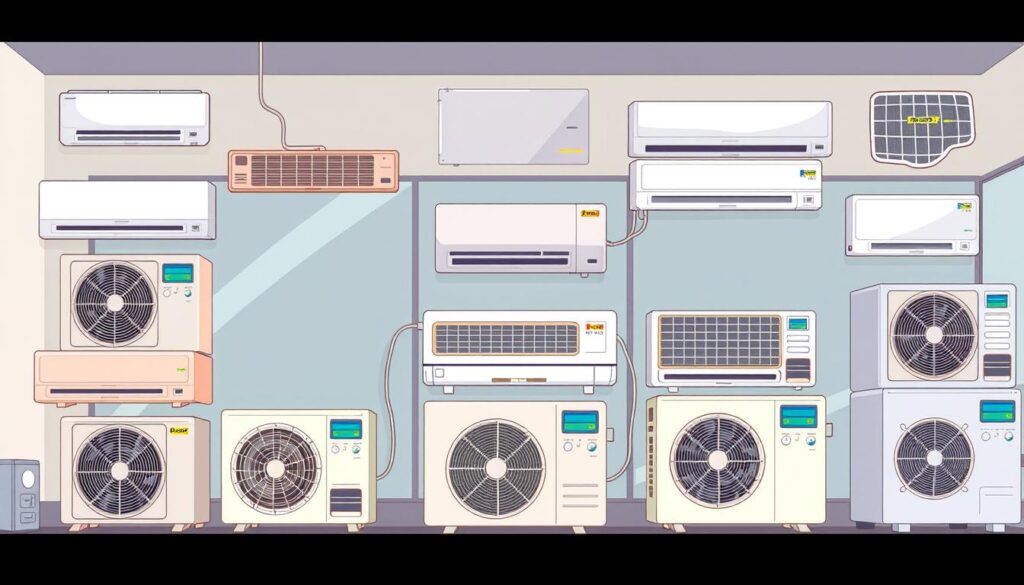
With various types of split system air conditioners available, finding the perfect one for your home requires careful consideration of several factors.
To select the ideal split system air conditioner, you need to consider factors like your home’s square footage, climate, existing infrastructure, and budget constraints. Proper sizing is crucial to ensure optimal performance without energy waste from an oversized or undersized unit.
Evaluating your home’s existing ductwork is also essential. If you have ductwork, a standard ducted system might be appropriate. However, if ductwork is absent or impractical, a ductless mini-split system could be more suitable. For regions with varying temperatures, assessing whether a heat pump model is necessary or if pairing your air conditioner with a separate heating system like a gas furnace is more efficient.
Professional assessment and installation are vital. It’s recommended to find qualified HVAC contractors and ask pertinent questions during consultations. For more information on the costs associated with HVAC systems, you can visit this link.
Timing is also a critical factor. Understanding seasonal pricing fluctuations can help you plan for a smooth transition to your new system, ensuring you get the best balance of upfront cost, operating efficiency, and comfort for your specific home.
